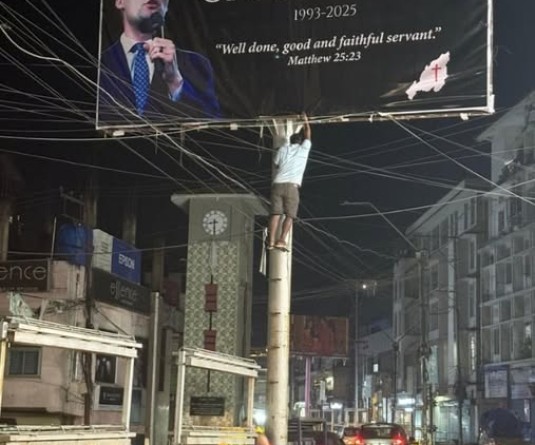
Z Lohe
The State of Nagaland was created out of the 16-Points Memorandum submitted to Govt. of India (GOI) by Naga Peoples’ Convention (NPC) in 1960. The incorporation of the Memorandum’s protective clauses in Art 371(A) of the Constitution of India satisfied the NPC and thus the creation of Nagaland as the 16th State in the Union of India was accepted 53 years ago.
Nevertheless, NNC rejected the offer of Statehood and went against NPC to the extent of killing its President late Dr. Imkongliba Ao. Thus, the creation of Statehood failed to bring lasting peace as the Naga National Movement continues till today.
All through these years, the Art 371(A) remains to be the icon for debates mostly amongst the Nagas both for and inadvertently or intentionally against it. Of late, it reappeared in local papers dated 12.11.2016 with the comment from Dr. Imtiwapang, Parliamentary Secy. for Geology and Mining under the caption “PIL a threat on Art 371(A)”.
As I sifted through the brief article, I understood his contention that the PIL (he did not name Lotha Hoho) filed by Lotha Hoho against Nagaland Petroleum and Natural Gas (NPNG) Rules & Regulations of 2012 had subsequently attracted the counter affidavit filed at Kohima Bench of Guwahati High Court by Union Petroleum ministry, GOI, against the same NPNG Rules and Regulations. Yet, to pass the buck to Lotha Hoho is like the question as to whether the egg or the hen comes first. Would Lotha Hoho file PIL against the said Rules had it not been found defective and threat to fundamental rights of the indigenous people of Nagaland? It is common knowledge that Lotha Hoho’s PIL was not against Art 371(A) but against those clauses in the NPNG Rules found detrimental to provisions in Art 371(A). Had the exploration of oil by MOGPL not been stalled, it would have become an item of NSDZ being in operation. Kudos to Lotha Hoho.
Specifically, the Lotha Hoho’s irk against the NPNG Rules of 2012 is both the question of making the Govt. of Nagaland as one of the landowners in Rule 4(3) and also the shoddy mechanism of sharing profit accrued out of oil exploration. The Rules and Regulations, in my layman’s understanding, lack clarity on the nature of royalty which both the State Govt. and the land owners deserve to be compensated. Also, to make State Govt. of Nagaland as land owner is a complete contrary to Naga tradition that the individuals, communities within a Village or the Village as a whole are the absolute landowners of lands in Nagaland but not State Govt.
Whereas, over the years I came across how both Govt. of Nagaland and organisations have had battered Art 371(A) as to the extent of undermining it or harmed it through misuse as I can recollect few of such instances. 1. Firstly, the Naga Mothers Association represented by its Joint Action Committee on 33% Women Reservation in Town Councils submitted a representation to Chief Minister of Nagaland on 19.3.2012 in which it asserted that the 73rd and 74th Amendment(s) of Indian Constitution had superseded Art 371(A). Are Naga women of Nagaland satisfied with the decimation or removal of Art 371(A) if they are allowed to become Councillors in small towns under reservation?
2. Secondly, quoting from Jonas Yanthan’s article appeared in Nagaland Page dated 7.6.2016 that the Chief Secretary of Govt. of Nagaland officially declared that “Nagas are owners of land but their ownership is only the top soil...Underneath resources belong to the Govt.” in a consultative meeting on ‘Transfer of land and its resources’ held at Kisama sometime during 2010 in which all tribal Hohos, Naga lawyers and elected representatives attended.
Reportedly known that hardly anyone raised a voice against it. What a distortion! The statement had hidden agenda with intent to impose NPNG Rules on Nagaland for personal profit. This is how the State Govt. protects Art 371(A). 3. Thirdly, quoting the comment of Justice (Retd) Zelre Angami who spoke in a seminar on Art 371(A) visa vis NPNG Rules of 2012 organised by Kohima Bar Association at Kohima which appeared in Nagaland Post on 5.11.2013. The retired Justice ‘said that serious questions may be raised as to the effect of the regulations, which has not been made by following the legislation procedures laid down in the Constitution of India’. This is how the NPNG Rules of 2012 remains controversial and challengeable in relation to Art 371(A).
Whereas, the then Union Minister Dr. Mahesh Joshi in-charge of Petroleum and Natural Gas under UPA replied to Unstarred Question No.2423(c) on 10.3.2011 in Lok Sabha as to ‘whether gas extracted on the land in areas’ have claimed by some States to be their properties? To which the reply runs “In this regard, Ministry of Law and Justice, GOI is of the opinion that the term ‘land and its resources’ in Art 371(A) would include mineral oil and their resources and the State of Nagaland would have the power to frame its own laws regarding ownership and transfer of such land and resources under Art 371(A).”
Secondly, a resolution was adopted by Nagaland State Assembly on July 26, 2010 on Petroleum and Natural Gas exploration in the State of Nagaland in the light of Art 371(A). To this resolution, the Solicitor General of India Gopal Subramanium had given his observation in favour of the State of Nagaland on 18.2.2011. Being conscious of space sharing, quoting the observation is avoided here.
Nevertheless, Nagas should not be surprised to learn that the Union Petroleum Ministry, GOI has become the No.8 respondent to Lotha Hoho’s PIL and challenging the constitutional validity of Art 371(A) under which whether the State Assembly of Nagaland has power to make laws relating to use of land and its resources. And I recollect few historical instances of how the people of Nagaland were mistreated by GOI in the past. Worst is the present that BJP leaders talked about review of Art 370 for Jammu & Kashmir and now the contemplation of the enforcement of Uniform Civil Code.
Firstly, the 9-Point agreement between NNC and Governor Hydari on behalf of GOI in 1947 was unilaterally abrogated by GOI. Secondly, Nagaland was placed under External Affairs Minister, GOI as per No.2 of 16-Points Memorandum of 1960 was unilaterally reviewed after 9 years by GOI in 1972. Thirdly, as per No.12 of 16-Points Memorandum, ‘the reserved forests that were transferred out of Naga areas’ and placed under Assam were to be returned to Nagaland remains undone even after elapse of 53 years of Statehood. GOI has no interest to sincerely handle this issue due to which Nagaland remains to be the only un-demarcated State out of 29. Fourthly, as per No.11 (i)&(ii) how to fund Nagaland was agreed. The GOI once again unilaterally nullified the funding pattern after 26 years in 1989.
As per the maxim ‘history repeats itself’, the history may repeat even in the case of Art 371(A) pertaining to counter affidavit being filed by Union Petroleum Ministry. Taking advantage of the situation, the BJP Govt. may try its best to decimate the power of Nagaland Assembly under Art 371(A). Of course, to emasculate the power of authority enshrined in Art 371(A) needs amendment with the approval of two-third majority of MPs in both Houses of Parliament. Nevertheless, to my belief, any court judgement in favour of the affidavit in question may become the point for reference in near future. Consequentially, in near future any attempt of GOI to scrap or emasculate the authority vested in Art 371(A) will automatically strain the relationship between Nagaland and the Union of India. In other words, once the Art 371(A) is placed in jeopardy at the instance of GOI, the question as to whether Nagaland’s integration with the Union of India is not desirable will arise.
The GOI is contemplating to legislate Uniform Civil Code in the name of giving equal treatment to all. Side by side, Art 371(A) is the eyesore and envy to many asking questions as to why the status of States within the Union vary from one another.
Meanwhile, the law makers in Nagaland may have to get down to their task and ratify those self infringing clauses or provisions in any of the framed rules which directly or indirectly impede the vibrancy of Art 371(A). I hope the law makers are ready to promptly react appropriately to Law Commission of India trying to promulgate Uniform Civil Code in the country including Nagaland. Also, the NMA may have to retract the statement that had dented on the Article 371(A).






